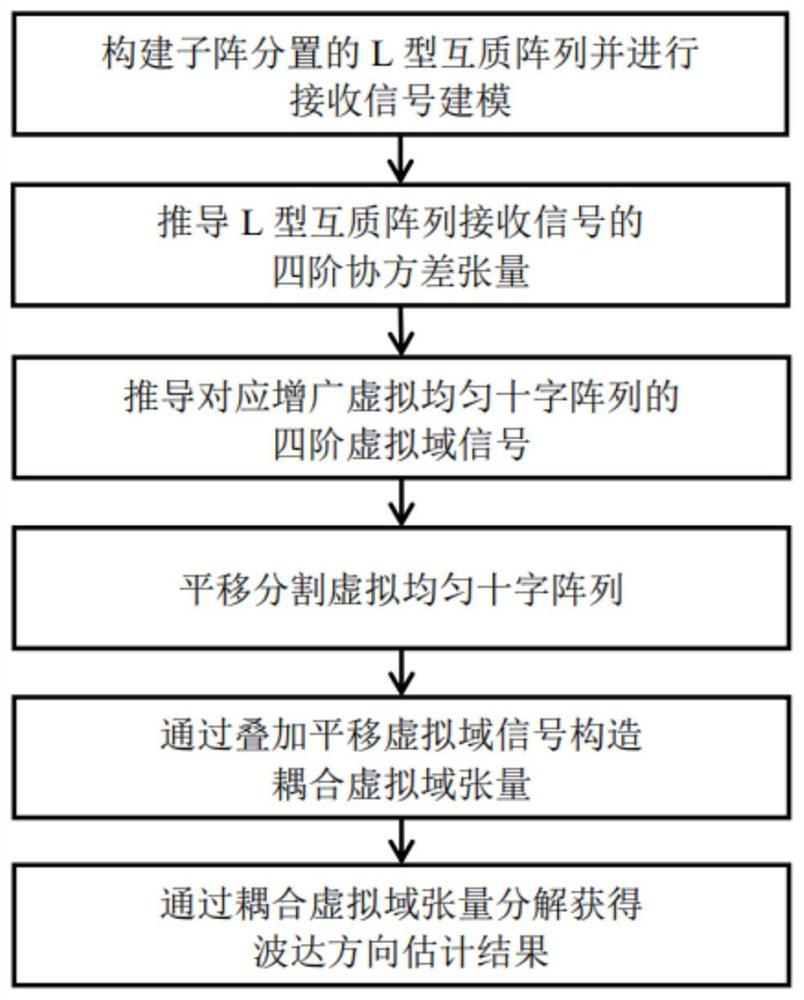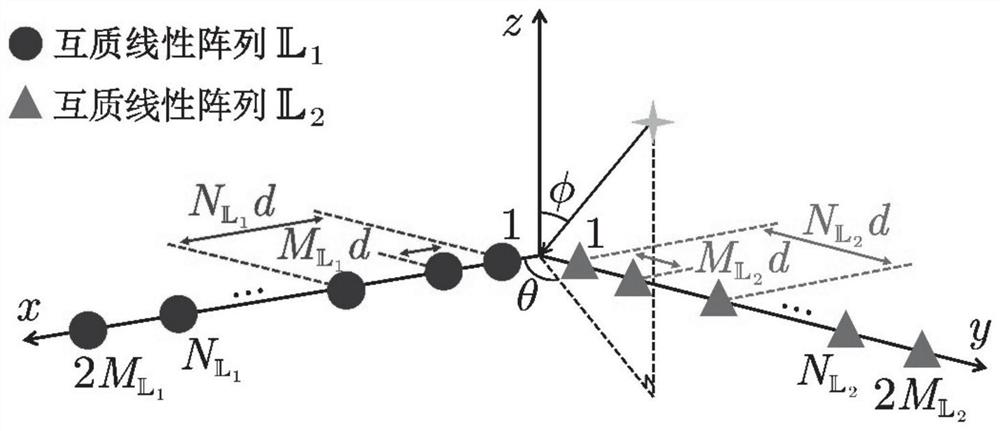L-type co-prime array direction of arrival estimation method based on coupling tensor decomposition
A technology of direction of arrival estimation and tensor decomposition, which is used in radio wave direction/bias determination systems, directional devices for determining directions, and direction finders using radio waves. Structural damage and other problems, to achieve the effect of accurate joint estimation
- Summary
- Abstract
- Description
- Claims
- Application Information
AI Technical Summary
Problems solved by technology
Method used
Image
Examples
example
[0108] Simulation example: L-shaped coprime array is used to receive the incident signal, and its parameters are selected as That is, the L-shaped coprime array of architectures contains antenna elements. Assume that there are two incident narrowband signals, and the azimuth and elevation angles of the incident direction are [20.5°, 30.5°] and [45.6°, 40.6°] respectively. Combine the L-type coprime array DOA estimation method based on coupling tensor decomposition proposed by the present invention with the traditional Estimation of SignalParameters via RotationalInvariant Techniques (ESPRIT) method based on vectorized virtual domain signal processing, and the Tensor method based on traditional tensor decomposition Multiple SignalClassification (Tensor MUSIC) method for comparison, respectively in Figure 4 and Figure 5 In this paper, the performance of the two-dimensional direction of arrival estimation accuracy of the above methods is compared under the conditions o...
PUM
 Login to View More
Login to View More Abstract
Description
Claims
Application Information
 Login to View More
Login to View More - R&D
- Intellectual Property
- Life Sciences
- Materials
- Tech Scout
- Unparalleled Data Quality
- Higher Quality Content
- 60% Fewer Hallucinations
Browse by: Latest US Patents, China's latest patents, Technical Efficacy Thesaurus, Application Domain, Technology Topic, Popular Technical Reports.
© 2025 PatSnap. All rights reserved.Legal|Privacy policy|Modern Slavery Act Transparency Statement|Sitemap|About US| Contact US: help@patsnap.com



